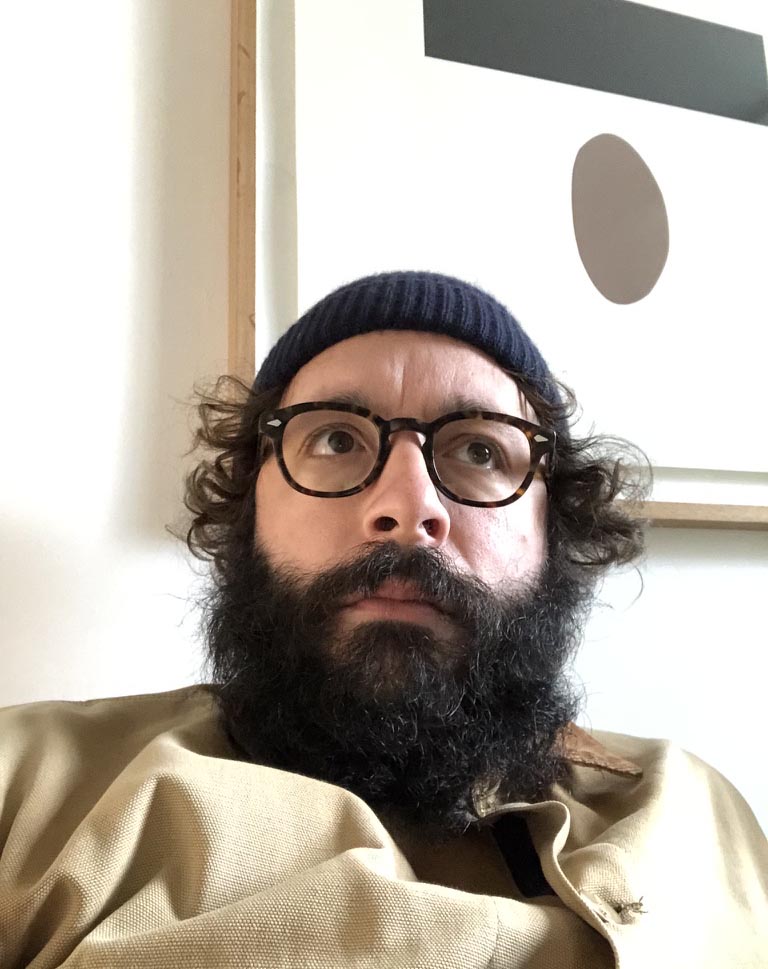“I’ll never forget it – the three of us were almost in tears. We’re getting to sing this, Elton and Bernie’s whole history up to that point”: Davey Johnstone on the making of Elton John’s 1975 masterpiece, Captain Fantastic And The Brown Dirt Cowboy
It began aboard the high seas, a concept record about Elton John and Bernie Taupin's early days, and when the band got to Caribou Ranch, they'd turn out one of the greatest albums of the '70s
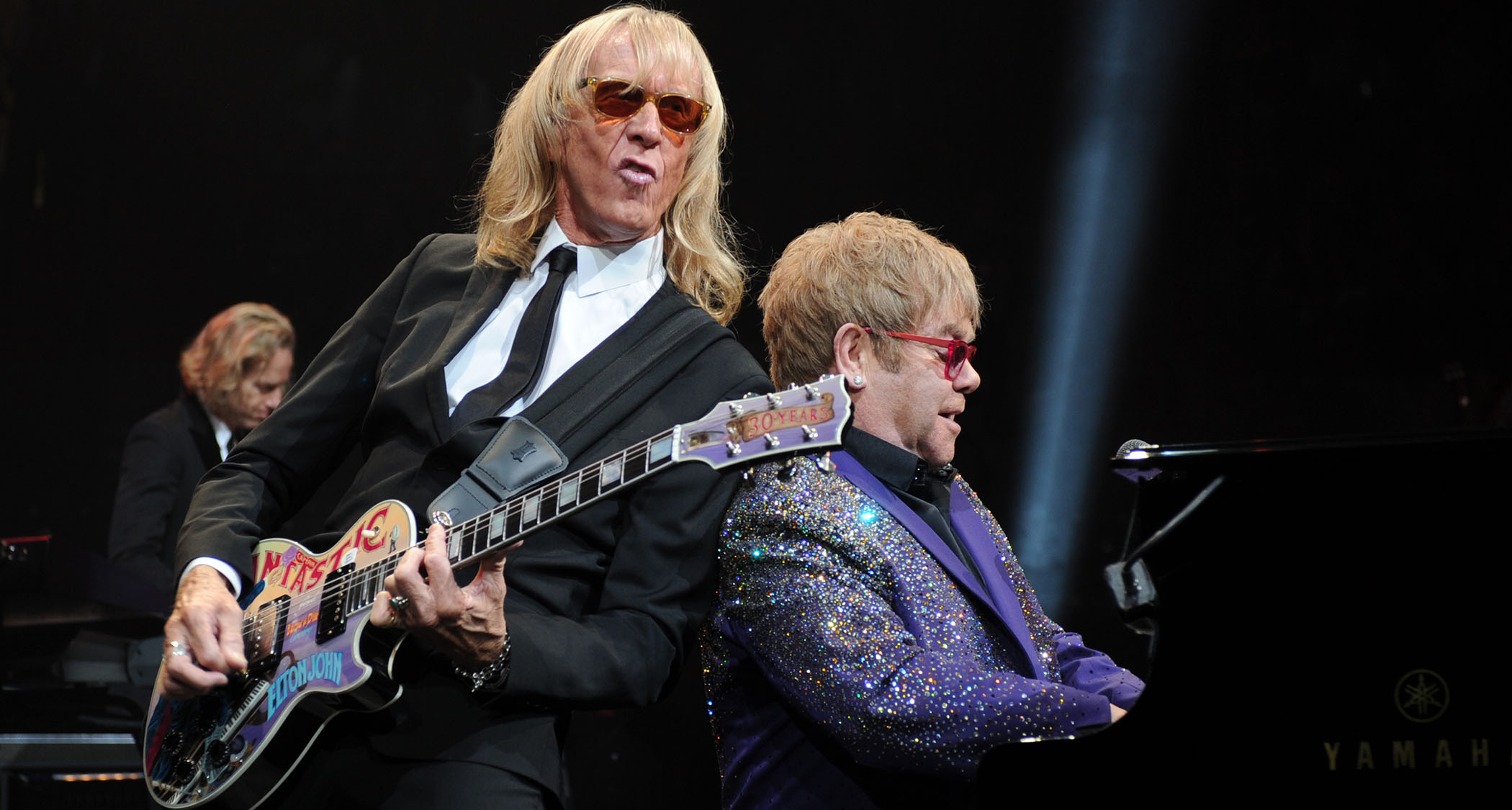
The Elton John Band had one hour each day in the music room of the SS France to put together the music for a concept album that would be their most musically audacious and thematically intimate to date.
Captain Fantastic And The Brown Dirt Cowboy, which celebrates its 50th anniversary this year with a deluxe reissue and a 5.1 Atmos remix, would tell the story of Elton John and his lyricist Bernie Taupin in the early days, when they were unknown and penniless, sharing a bedsit in London, writing with dreams of making it.
By the time of the album’s recording, they had most definitely made it. They were the hottest thing since the Beatles – and that was not just popular opinion, John Lennon himself had said so. Captain Fantastic... went straight to number one, selling 1.4 million copies in the first four days of its release.
As Elton’s long-serving guitarist and musical director Davey Johnstone remembers it, joining MusicRadar via Zoom, Captain Fantastic... all began with a bit of fun. A Transatlantic cruise aboard the world’s largest passenger liner on its final voyage would give them just enough time to let their hair down and gather their thoughts. It was just what they needed.
“We knew it was going to be a fun thing. And John Reid [Elton John’s former manager] said, ‘Look, make sure you bring some of your stage clothes with you, because every night we’re going to dress for dinner, and we’re going to sit at the captain’s table,’” recalls Johnstone. “It was quite a big deal, every night we got done up to sit at the captain’s table – was quite a thing. We were there every night.”
Music industry veteran Tony King, then Reid’s assistant, was on the ship with them. Johnstone says King set the sartorial standard. And you have got to picture this. Here was Elton John, Davey Johnstone, et al, sitting down to their starters looking like they were about to take to the stage.

“Tony was always immaculately dressed, and so we all trooped down to the dining room every night in our finery,” says Johnstone. “I mean, it must have looked ridiculous. We’re all wearing Granny Takes A Trip clothes, and all this stuff that we’d wear onstage in those days. I was sitting with the fucking captain. It was insane! But it was brilliant. We had a good time.”
Want all the hottest music and gear news, reviews, deals, features and more, direct to your inbox? Sign up here.
I’ve got a feeling that Elton might have won the bingo... to have Elton John going, ‘Bingo!’ It was a comical thing
If they weren’t at the captain’s table you might have found them in one of the SS France’s swimming pools, or in one of its cinemas. You would have found percussionist Ray Cooper in his cabin, sick as a dog. “I said, ‘Come on, man, you were seasick.’ And he said, ‘No, no, no, food poisoning.’ So, yeah, the poor guy never came out of his cabin more than once,” says Johnstone.
The others in the travelling party were more adventurous, making full use of the ship’s facilities. There was plenty to be occupied with. An 11-year-old Julian Lennon was onboard with his mother, Cynthia, and the band were chaperoning him to make sure he didn’t get up to too much mischief. They weren’t hiding themselves away. Elton even partook of the ship’s evening entertainment.
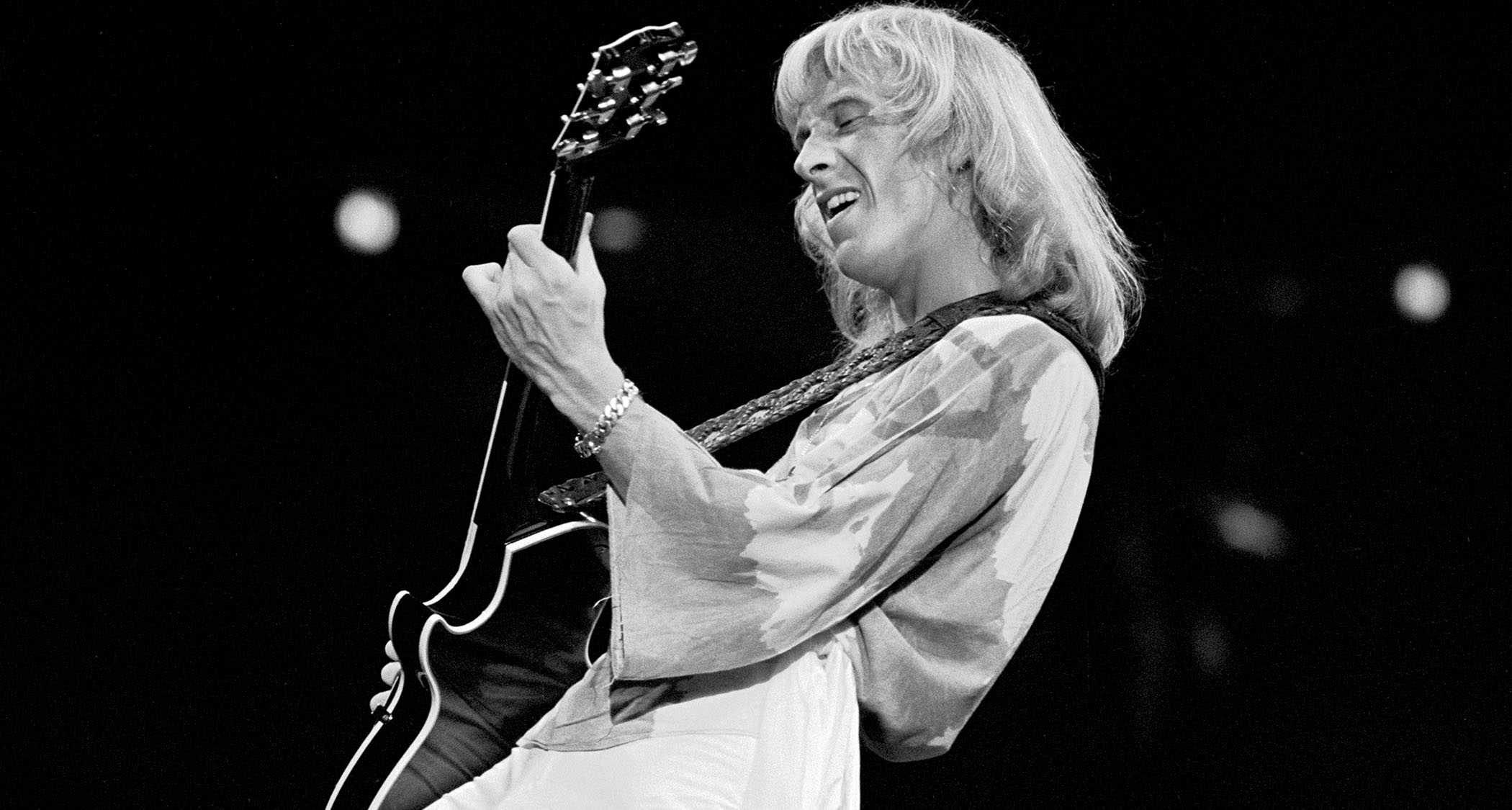
“I’ve got a feeling that Elton might have won the bingo, one of the bingo games that he and Tony King had sat in,” says Johnstone. “He actually won it. And so to have Elton John going, ‘Bingo!’ [raises hand] It was a comical thing.”
But this was a working holiday. Elton had a sheet of Taupin’s lyrics in his pocket. He had the concept swirling around in his mind, ideas percolating. What he wrote he committed to memory. They all knew that they were making their way to Nederland, Colorado, to make a record in the shadow of the Rockies. Preparations were being made at Caribou Ranch, the residential studio of choice for Elton and producer Gus Dudgeon, for album number nine.
And they had the Salon Debussy to write in, for one hour each day. That’s all. This was a working cruise liner. Elton John was a big deal but too had to share the facilities with the onboard entertainment.
“There was a room that we were assigned for an hour, I believe it was every day, between a ventriloquist and an opera singer,” says Johnstone. “We had a slot in the middle, and we went in there, and we had an electric piano, and I had my acoustic, and that was where I actually came up with the opening lick that you hear on the record.”
One hour each day would do it. They were used to working quickly. Johnstone’s efficiency when writing and recording is trait he and Elton share.
“I tend to be really quick. Elton is exactly that way, too,” says Johnstone. “I think that’s another reason that we always got on well. When I heard him even maybe just starting to put a song together, I would know what it was I wanted to do.”
Drummer Nigel Olsson did not hang about once the band got to New York City. He made a beeline for Caribou Ranch to set up the drums with Dudgeon while the band killed time in the city for a week. Olsson and Dudgeon were searching for the “ultimate snare sound.”
For the record, his Slingerland kit comprised of a 14” by 8” snare, a 24” by 20” bass drum, five toms (8” to 16”), and three cymbals. Olsson got his drums dialled in just right so there would be no messing around when tracking started.
Johnstone says a drum sound is a non-negotiable. It sets the table for the sound of an album. “That’s the basis of the whole thing,” he says. “Gus and his engineers did a great job putting all that together.”
With the drum sound already established the time Elton arrived at the studio, there was more time to experiment with different sounds. There was no hurry. Having safely handed over Julian Lennon to his father, John, at New York Harbor, they were expecting the former Beatle to join them at the studio at some point, and were busy recording the album in the order it was written.

First up, the title track, and the lilting, steely splash of Johnstone’s Yamaha FG-140 acoustic guitar inaugurating what would be one of the most intense recording experiences they would ever have. The chords came tumbling out and away they went.
“Pretty much every single track was intense because we recorded it in order,” says Johnston. “We recorded it in the order that Bernie had written the lyrics and saw the album. We thought, ‘Okay, here are all the songs. Here are all the lyrics. Let’s do each song as it comes.’ We already knew how Captain Fantastic… would go because we started it on the boat.
“I came up with that opening riff which became what it is, this kind of little folk-country song, and then it goes into this fucking totally different [thing]. So each song was treated really, really separately, and really importantly. It wasn’t like, ‘Okay, we’re gonna lay the track down.’ Each track was really intense.”

The title track is a work of field-born Americana, the soundtrack to an imaginary western. Johnstone lays down two acoustic guitar parts, three electric guitar parts, and two mandolin parts. Elton had a wah pedal on his electric piano.
We just went on and went back out on the road, and then we’d come back in the studio and back on the road. We never stopped
There are layers and layers as they take this dusty folk-country song and electrify it. It’s like a metaphor for John/Taupin’s career. The bright lights were inevitable.
If the album is the origin story of Elton John and Bernie Taupin, musically it serves up the quintessence of what made the band what it became; Johnstone’s folkie sensibility and gift for playing pretty much anything with strings, Elton’s rock ’n’ roll energy and musical curiosity to take a song off-road, and this strange phenomenon of a band of British players making Americana central to their sound.
“You’re absolutely right. Americana is now this whole thing. We were fucking playing it in the ‘70s. This is what we did,” says Johnstone. “Dixie Lily [from 1974’s Caribou], Captain Fantastic, all of these tracks are steeped in Americana. So, yeah, very much so, we’ve always been that kind of a band.”
Each song presented its own challenges. Someone Saved My Life Tonight is Elton at his rawest. The arrangement had to leave space for that. With a running time just under seven minutes, it did not make the most obvious choice for a single, but then this was 1975 and there was something in the air.
On Someone Saved My Life Tonight, the main point that we wanted to get across was the vulnerability of the song, and the beauty of the piano sound
A few months later, Queen would do something similar with a piano-led epic as they released Bohemian Rhapsody as the lead single from A Night At The Opera. It still blows Johnstone’s mind that it was successful as a single.
“On Someone Saved My Life Tonight, the main point that we wanted to get across was the vulnerability of the song, and the beauty of the piano sound,” says Johnstone. “Now, I mean, pfft! Here’s another thing. I’m still confused when I think of the fact that it was a massive hit single [laughs], because it was the only single on that record, which is kind of weird. It could have been could have been others. It was very, very emotional.”
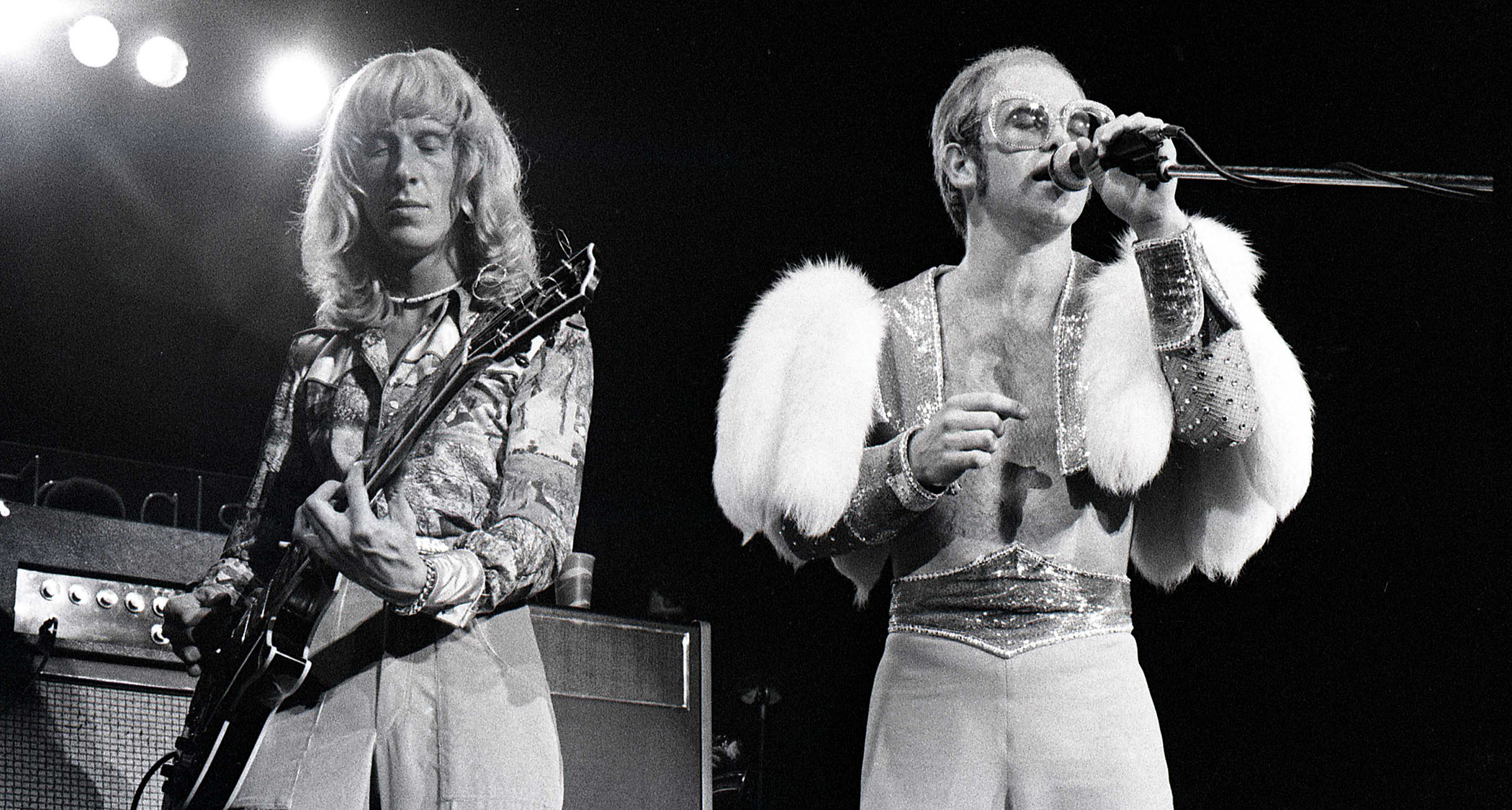
How could you follow Someone Saved My Life Tonight, this operatic cri de coeur? It was an unorthodox single but the perfect way to close out Side A, an almighty mic drop. You can pick yourself off the floor as you turn the vinyl over.
Someone Saved My Life Tonight is a piano track but in the mix you will hear the swirl of Johnstone’s acoustic guitars through a Leslie.
There was always often a whiff of psychedelia in Elton’s ‘70s work, as on Tower Of Babel with its Univibe piano – all these modulated elements to contrast with the biscuity dryness of acoustic folk instrumentation, and the straight-ahead, decade-appropriate sound of Johnstone playing his 1972 Les Paul Custom through a Vox AC30, as he did on the Tower Of Babel solo.
Johnstone’s approach is worthy of study. Oftentimes his acoustics and mandolinw will be layered and panned, and used to sit alongside the piano, filling out those frequencies, whereas he will use the electric guitar like a secondary lead vocal, like on Bitter Fingers, where his rhythm/lead lines sound like they are in conversation with Elton.
If I was doing an acoustic guitar, whatever kind of it was, we would double it to get a bigger, more glossy kind of sparkly effect
“I don’t know why I was so audacious to think that I should play the tune behind the chorus, but it works,” he says. “When we did it, I remember Elton going, ‘Oh, I fucking love that.’”
What makes it doubly audacious is that it the fuzzy tone is really just a little Pignose amp pushed hard. Johnstone would use it regularly throughout the Captain Fantastic… sessions. “I used to go to the bass pickup, take all the bass off so that it was just a pure ‘woooo’ type of sound,” he says.
On occasion, he would bypass the outboard gear completely and just plug his guitar direct into the console, as he did on Writing, a track that’s all light on its feet, with Johnstone’s guitars tip-toeing through these almost celestial frequencies, doubling his acoustic with a Stratocaster, while Dee Murray’s bassline does much of the heavy lifting, giving it ballast.
Johnstone and Dudgeon had a reputation for double-tracked guitars, and by the time Captain Fantastic was being recorded they had it down to a tee.
“When I had a double or something, it pretty much would happen straight away. Don’t waste time on it,” says Johnstone. “If I was doing an acoustic guitar, whatever kind of it was, we would double it to get a bigger, more glossy kind of sparkly effect, and I would do it straight away.
“I’m not bragging here, but it became a thing that I became the double-track guy, so when we did this stuff on Writing, which was all direct into the board on that Strat, it was like, ‘Oh, let me just double that. I’ve got an idea.’ I was really playing off of it. I wasn’t doubling the part, per se, all the way. I was putting a couple of harmonies on, and then having them offset each other.”

There is a story online that Johnstone had to intervene when they were tracking the album’s centrepiece, Someone Saved My Life Last Night, that Dudgeon was pushing Elton too hard, given how difficult the subject matter was. But that’s not how Johnstone remembers it. One of Dudgeon’s greatest gifts was to humour Elton and keep him on-point.
I really miss Dee Murray because he was such an integral part of what we were doing
“Gus has always been perfect at getting the best out of Elton,” he says. “Gus was a major, major part of this whole thing… A wonderful producer, who needs to be heralded, not only for this album but all of Elton’s albums.”
Murray, too, was key. In Johnstone’s opinion a criminally underrated bass player, “stunningly brilliant,” and capable of playing a line you would least expect. The first time Johnstone worked on a track with him, on 1972’s Honkey Château, he couldn’t believe what Murray came up with.
“When he comes in on Rocket Man, that bassline is fucking devastating. Who would think of playing that kind of a line?” says Johnstone. “You know, most bass players would just go to the root note. Dee, he’s just phenomenal. He does the same thing on Curtains, and, again, as you’ve mentioned, Writing is a phenomenal part. I really miss Dee Murray because he was such an integral part of what we were doing.”
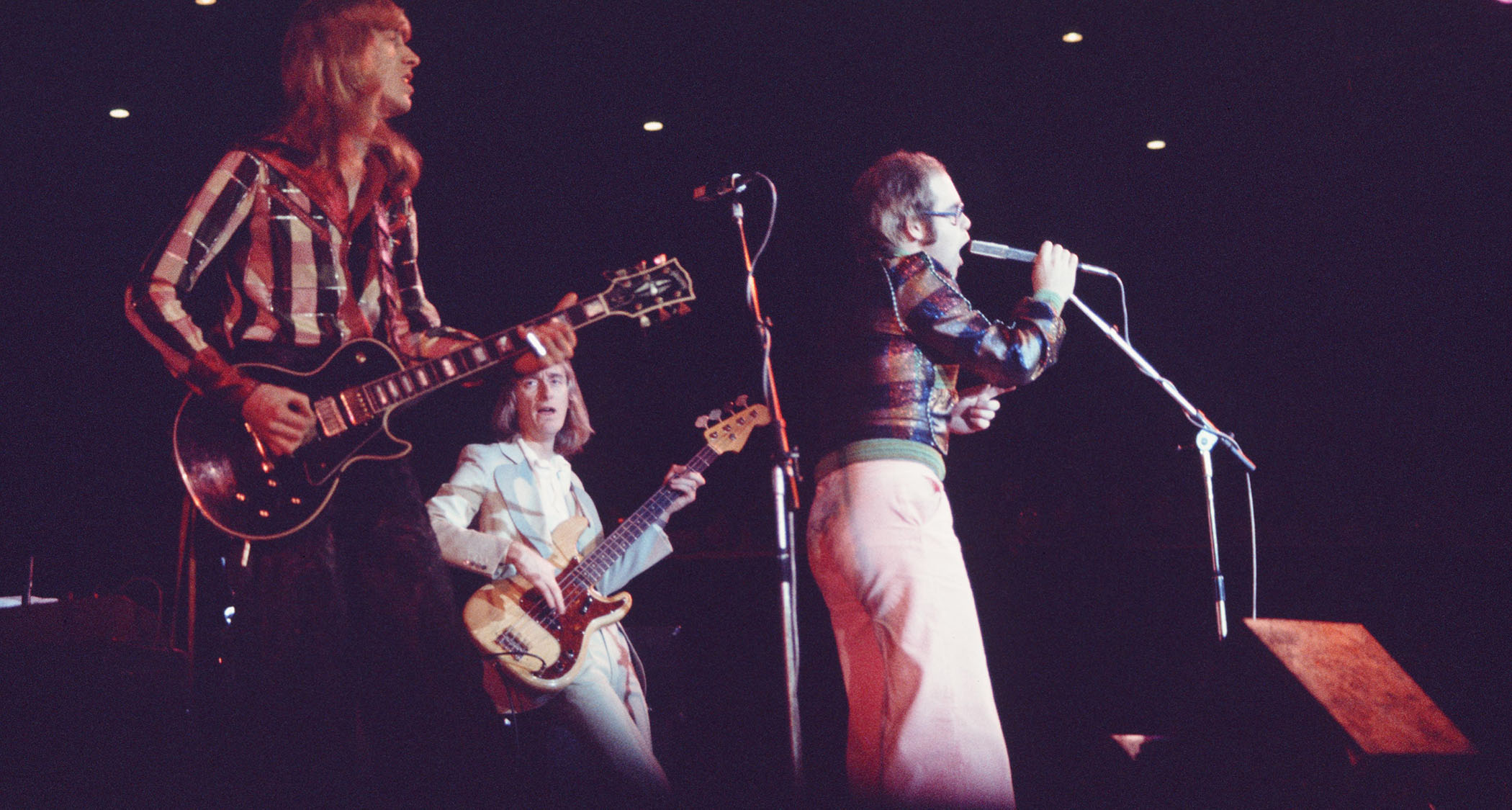
Curtains was another one where the Univibe saw some action. Johnstone’s electric went through one and then into the Pignose. The Yamaha acoustic had served him so well. It was a dream to record. Dudgeon loved it. But Captain Fantastic… was the first time that Johnstone started experimenting with different acoustics. Johnstone brought a Martin D-28 to the studio.
There’s a spirit of expansionism running through the album. Little wonder John Lennon wanted to experience some of it, and he did, turning up to the studio to record a cover of the Beatles’ Lucy In The Sky With Diamonds (Lennon is credited as Dr Winston O’Boogie), which was released as a single with Lennon’s One Day (At A Time), also recorded during these sessions, as the B-side.
These side missions were indicative of how prolific this hit-making machine had become. Philadelphia Freedom, written in tribute to Billie Jean King, was recorded during the Captain Fantastic… sessions.

That was another song on which Johnstone plugged an electric into the desk, this time a Fender Telecaster, before they gave the track to Gene Page to add orchestration. Again, Philadelphia Freedom was a hit, another number one. They were on a hot streak. Johnstone says they were always thinking one album ahead. There was no time for reflection.
“We just went on and went back out on the road, and then we’d come back in the studio and back on the road,” he says. “We never stopped to go, ‘Jesus, that is really fucking good.’ We never actually stopped to do that. Which was probably, in retrospect, it was probably a good thing. We didn’t get full of ourselves and the rest of it. We just carried on doing what we were doing.”
And there was much work to do. They were pulling out all the tricks. On Better Off Dead, they put Olsson’s drums through an Eventide Harmonizer. There are reportedly six layers of backing vocals on the track. Their appetite for adventure grew with each passing track, exploring the limits of vocal harmonies, Johnstone bringing his folk influences to bear on them.

The wind was in their sails. So when they came to closing out Captain Fantastic… with We All Fall In Love and Curtains, they decided just to record the tracks together, no breaks in between, 10-minutes plus of music.
We’d become famous for doing these really majestic background vocals, with really great parts, and we loved doing them
Hey, they had opened Goodbye Yellow Brick Road like that, Funeral For A Friend/Love Lies Bleeding. What could go wrong? Well, they did it, and in two takes. It was 50 years ago now but Johnstone remembers it like it was yesterday.
“That’s a long, long fucking piece. It’s like Funeral For A Friend… plus!” he says. “We’d become famous for doing these really majestic background vocals, with really great parts, and we loved doing them, but when we were doing the backgrounds for Curtains, and we were standing in a circle – I’ll never forget it – the three of us were almost in tears.
“And just like us/You must have had/A once upon a time… Even when I’m telling you this right now, I’m choking a little bit, because it’s fucking special. Listening to these words, and we’re getting to sing this as part of our history, the history of this band, and of course Elton and Bernie’s whole history up to that point, the whole thing was very moving. It was very deep, very fucking moving.”
Johnstone hasn’t had that long to sit with the new 5.1 Atmos mix of Captain Fantastic And The Brown Dirt Cowboy, which was overseen by Greg Penny, and yet he is already hearing details that he had never heard before.
Today was a good day to catch him because hearing it in 5.1 has given him a deeper appreciation of not only album but that iteration of the Elton John Band and what they were capable of, and the part he played, and what the band’s greatest strengths were – what made the ultimate ‘70s band tick.
“Well, here’s the thing, we never, ever told each other what to do,” he says. “I tend to know the right things to play. And I’ve always been blessed with the gift of not stepping on the vocal. I think if a song’s great, leave it the fuck alone.”
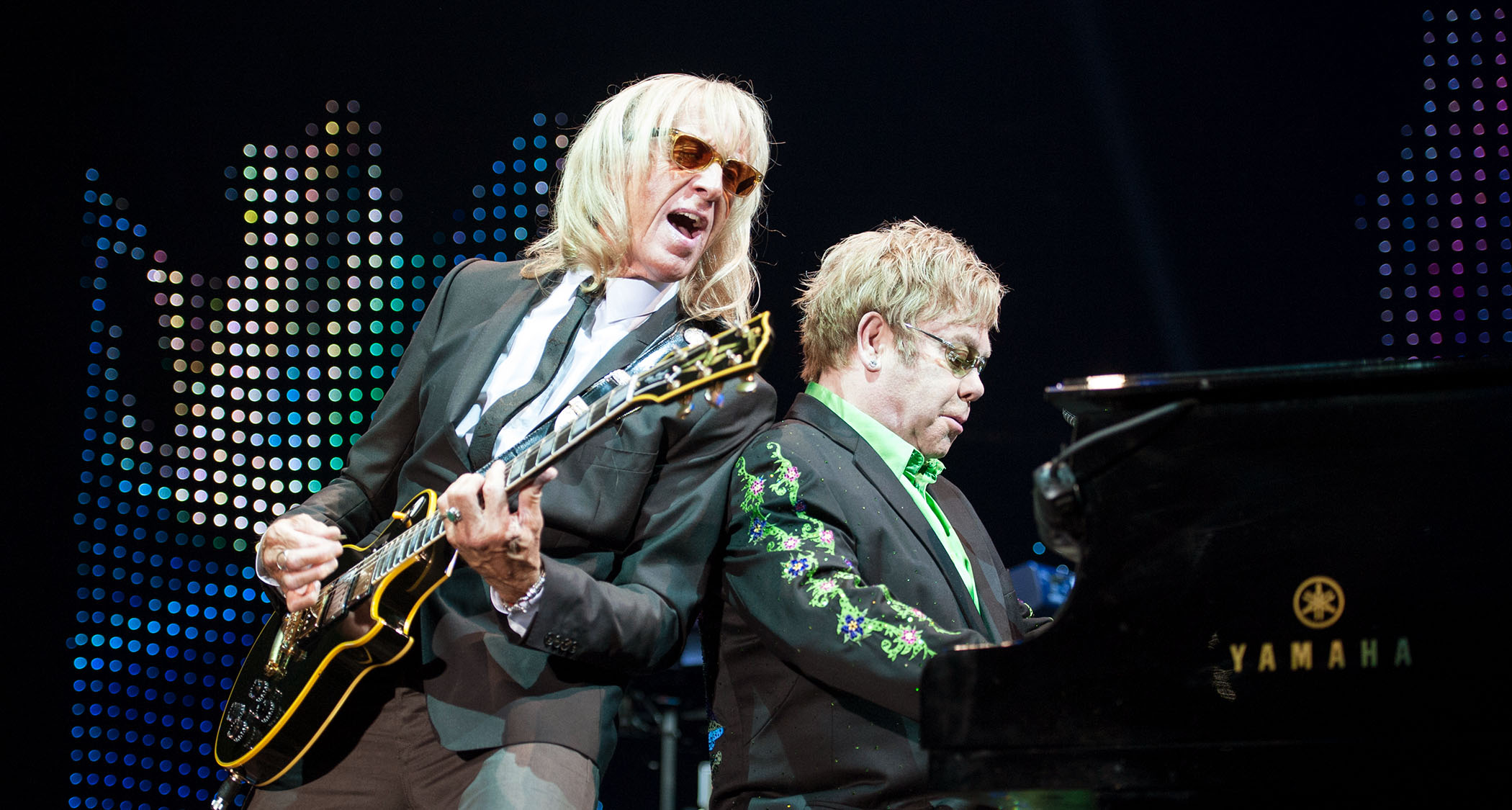
“What’s the point of blowing a loud meaningless guitar solo over a great vocal line? That’s something that’s always come to me naturally, and I think there was an awful lot of trust between all of us, because we just played what we wanted to play, and instinctively things came out that way.
“I’ll sit back and make sure everybody gets the chance. It’s something that we learned in the original band, with just the four of us, that we loved the space. The space between the notes, to me, is as important is the notes themselves.
“That’s really important in music as a whole – the tension that you can build that with space. Instead of filling every nook and cranny up with a lick or a line or whatever, I always feel that it’s important to let the thing breathe on its own.”
- Captain Fantastic And The Brown Dirt Cowboy 50th Anniversary is out now via UMR.
Jonathan Horsley has been writing about guitars and guitar culture since 2005, playing them since 1990, and regularly contributes to MusicRadar, Total Guitar and Guitar World. He uses Jazz III nylon picks, 10s during the week, 9s at the weekend, and shamefully still struggles with rhythm figure one of Van Halen’s Panama.
You must confirm your public display name before commenting
Please logout and then login again, you will then be prompted to enter your display name.






